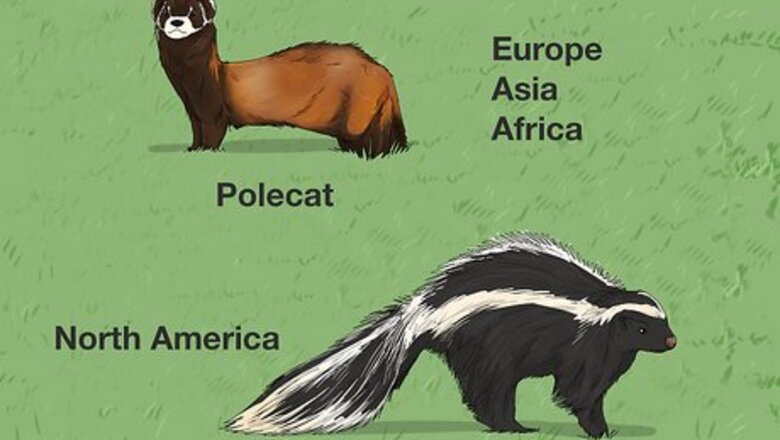
views
- Skunks live in North America while polecats are found in Europe, Asia, and Africa.
- Polecats are typically dark brown with white face markings, while skunks are usually black with distinctive white stripes.
- Skunks have large, bushy tails unlike polecats’ long, sleek tails.
- Polecats live in pastures, marshes, and meadows, while skunks prefer forest edges.
Origin
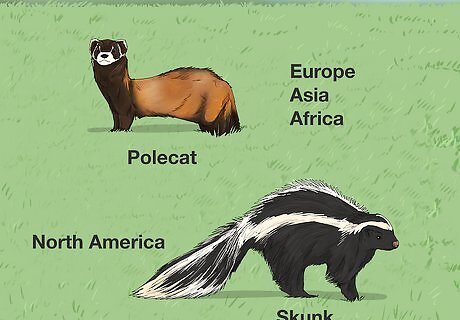
Polecats live in Europe, Asia, and Africa while skunks are North American. Polecats and skunks are actually found on 2 different sides of the planet! You’ll find polecats all across western Europe, Russia, Mongolia, and sub-Saharan Africa. Skunks are from across the pond and are only found in Canada, the United States, and across northern Mexico. It's a common belief that English colonists originally mixed up skunks for polecats. They saw the similar patterns on skunks, smelled their musky odor, and mistakenly called them polecats.
Coloring

Skunks are black with a white stripe, while polecats are usually brown. It’s hard to miss a skunk, with their shiny, jet black fur and distinct white stripes. Polecats, on the other hand, are typically dark brown. Instead of white markings on their body, polecats have white fur on their mouths and across their eyebrows. This gives them a cute “mask” that’s similar to a raccoon's face markings. The African polecat, or zorilla, is probably the most similar looking to a skunk. Their fur is dark brown or black with white spots and stripes marking their bodies.
Tail
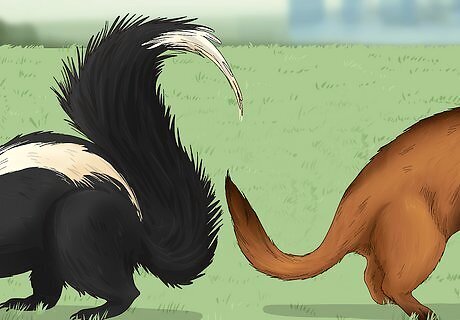
Polecats have long, sleek tails while skunks’ are large and bushy. Unlike a skunk, a polecat’s tail more closely resembles a ferret’s tail. Their tails are longer, thinner, and more brushed-down than a skunk’s. There’s definitely no mistaking a skunk’s tail. They often hold them up high in their, fanning the fur across their backs.
Size
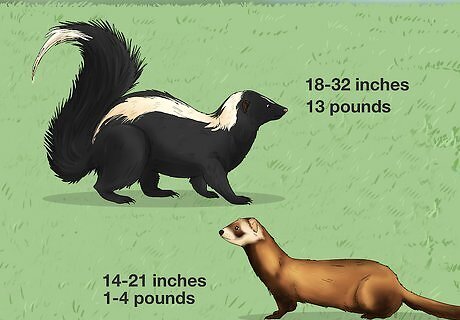
Skunks are typically larger than polecats. The average adult skunk is about 18 to 32 inches (47-82 cm) long and weighs about 13 pounds (6 kg). While not much smaller, polecats are typically about 14 to 21 inches (35–53 cm) long. They’re also less heavy, weighing in at around 1 to 4 pounds (0.5-2 kg).
Diet

Polecats like to eat rats, while skunks prefer bugs and berries. Both skunks and polecats are omnivores, meaning they eat plants and animals. While they’ll snack on plants occasionally, polecats mostly like to eat small animals like rats, rabbits, and birds. A skunk’s diet mostly consists of the insects and beetles they dig up, as well as any nuts and fruits they can find.
Habitat
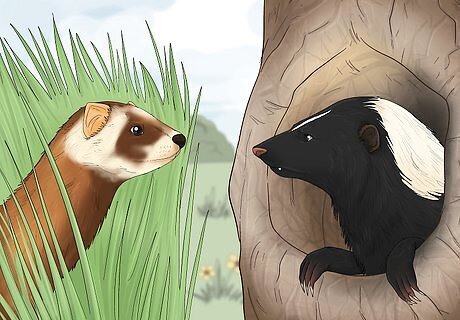
Skunks live in forest edges, while polecats live in grasslands. For the most part, skunks are woodland animals, making their burrows and dens in hollow trees. They often live in more residential areas, so it’s not uncommon to see them running across your lawn, too. Polecats aren’t as common in forests, and are usually found in lowland areas like pastures, marshes, and along rivers. If there’s a skunk taking up residence in your yard, it’s easy to get rid of them. Just keep your trashcan closed, sweep up birdseed, and put your dog’s food inside. Skunks are nocturnal, so placing motion-sensor lights on your house can scare them away, too. Skunks are natural pest controllers, so if they aren’t causing damage to your lawn, you might want to let them stay!
Behavior

Polecats might be more solitary animals than skunks. Polecats generally stick to themselves, creating single dens and hunting alone at night to catch their prey. Skunks aren’t quite pack animals, but they might stick together more than polecats. They often cuddle up during the cold months to keep each other warm.
Relationship with Humans
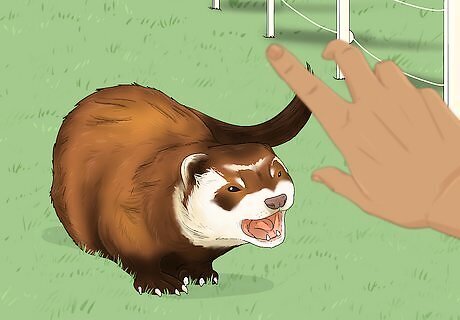
Skunks might get more aggressive than polecats. While skunks don’t typically attack unless they’re threatened, they might be more likely to than polecats. If you see a skunk in your yard, give them space to keep them, you, and your animals happy. Because polecats are more solitary, they tend to be skittish around humans. If your dog does get sprayed by a skunk, remove the odor by washing them with skunk-removal shampoo. Or, make your own solution by mixing together 1 quart (0.95 L) of hydrogen peroxide, ¼ cup (52 g) of baking soda, and 1 teaspoon (5 mL) of dish soap.
Classification
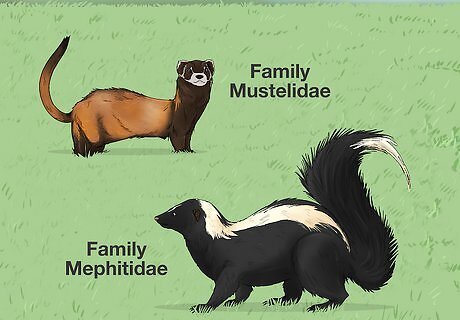
Polecats are in the Mustelidae family, while skunks are in Mephitidae. Skunks and polecats were previously believed to both belong to the animal family Mustelidae. Recently, scientists discovered that a skunk’s genetic makeup is actually pretty different from a polecat’s. So, they reclassified skunks into their own family, called Mephitidae. Polecats are more closely related to weasels, martens, otters, minks, and badgers. Stink badgers are the only other animal in the family Mephitidae.
Smell
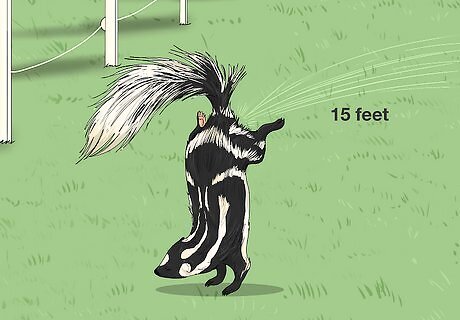
Skunks might be smellier than polecats. Both polecats and skunks are well known for their pungent odor. They release the musky stench from their anal scent glands, which stops predators in their tracks. Skunks might be more notorious for their smell, but there’s no true way to know who’s the stinkiest. African polecats can definitely hold their own, and are known to keep even the fiercest of lions at bay! Skunks can spray their odor as far as 15 feet (4 m). Even more impressive is the fact that you can smell their spray about 1 mile (2 km) away!




















Comments
0 comment